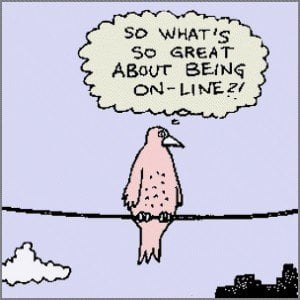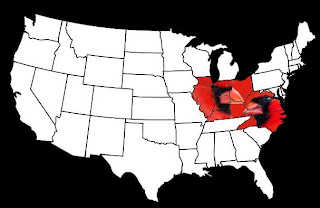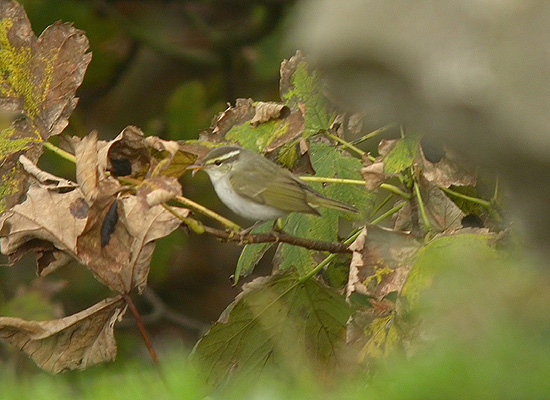On the move
Wildlife officials, former hosts hope falcons will move to site
NEW ADDRESS OFFERED TO DOWNTOWN PEREGRINES by Nancy Sheehan The Worcester Telegram and Gazette reported the wonderful news that,
The two peregrine falcons that call downtown Worcester home are being offered a nifty custom-built nesting box in a new location atop the Printers Building, 44 Portland St. State wildlife officials are praying that the endangered birds of prey will take to their new digs since they have become aves non grata at their longtime home on a ledge at One Chestnut Place. It's not that they don't like birds over there. “My tenants went crazy for them,” said Cheryl Esper, property manager at One Chestnut Place, an office building that houses the Fallon Community Health Plan, among other tenants. “When they would band the babies we would do it in the lobby and let everybody come and watch.” The problem is that the building needs an overhaul of its façade, an important project that was supposed to be done last summer but was put off because of the nesting birds. The concern wasn't just that the work might disturb the peregrine chicks. It was also that the adult peregrines might disturb workers out on the building's roof and ledges. Falcons, while they generally keep to themselves, become extremely protective after their babies hatch. “They've gotten more and more aggressive,” Ms. Esper said, of the sharp-taloned, dive-bombing duo. The birds have even attacked people on a balcony five floors below their nest, she said. “Last year was really tough. We couldn't even wash our windows,” Ms. Esper said. The solution was to seek a new nesting place so exterior work on the building could finally commence.
A call went out from the Massachusetts Division of Fisheries and Wildlife, which has worked to restore a peregrine population in the state after the pesticide DDT wiped them out in the 1960s. Owners of the Printers Building stepped forward. “They were looking for a home and we thought it would be exciting to have peregrine falcons nesting on our roof,” said Wyatt Wade, president of Davis Publications, which owns the building. “It's a way to support the wildlife of Central Massachusetts and downtown Worcester.”
The falcon nesting box at One Chestnut Place, which had become dilapidated over the five years the falcons lived there, was taken down before falcon mating season, which begins right about now. Mass Wildlife staff built a new larger box and put it up on the northeastern edge of the Printers Building roof recently. It is a new and improved design that includes slots that allow a piece of plywood to be slipped in to cover the entrance. Then, a side door can be opened and the chicks safely removed for banding so the state can track the birds. The old box had no front door, and because the cliff-dwelling peregrines nest on precipices, there was always the danger that the chicks would try to flee the human hands that were reaching for them and plummet to their deaths.
At One Chestnut Place, a state wildlife staffer had to lie down near the edge of the roof and hold a net under the open front of the box. That worked just fine when the parents weren't around. One time, however, the peregrines caught sight of the operation and — WHAM. “He was blocking their escape route as we were going in from the side trying to take the chicks out,” Mike Morelly, a state wildlife technician said as he was helping install the new Printers Building box. “One of the parents came down and nicked him. The talons are extremely sharp. They're like razor blades. It knocked his sunglasses off and drew a little blood.” Never fear. You are quite safe unless you go prancing around on the roof while their chicks are there. They don't go attacking people unless they feel their babies are in danger. “Peregrines are very good parents,” Mr. Morelly said, as he helped install the new box on the Printers Building. “But this will definitely become a no-fly zone if she lays her eggs here.” If she does. “They could pick any building in the city to relocate to,” said William J. Davis, district supervisor for the Division of Fisheries and Wildlife. “The new box has everything you would think a falcon could want but it depends on whether they take a liking to it. Bottom line, it's up to them where they decide to go. They may end up on another building.”
The birds, which historically nest on cliff faces, have adapted to the presence of human cities by setting up housekeeping on taller buildings, on bridge girders and other urban spots that mimic their natural setting. The birds, like other raptors or birds of prey, were especially sensitive to DDT because their place near the top of the food chain meant they ingested higher concentrations of the deadly, now-banned pesticide. Some died from poisoning. In other cases, DDT disrupted the reproductive system of female birds, which prevented some from laying eggs at all, or, when they did, the eggs had extremely thin and weak shells and the birds died out. Repopulation efforts in Massachusetts began in the early 1980s and there are currently about 30 nesting pairs of peregrines in the state, but only one in the Worcester area. The closest nesting pairs are in Boston and Springfield and at Mount Sugarloaf in South Deerfield and Mount Tom in Easthampton, Davis said. Building a new box for the local pair is part of the state's continuing measures to protect peregrines. It was placed within sight of the old box so it's certain the birds will see it as they soar over downtown. But will they move in? “It will be the beginning of March before we know,” Mr. Morelly said. “Even then it's definitive only when she sits on the eggs. If that's going to be here or back over there, we don't know. Hopefully it will be here.”



















